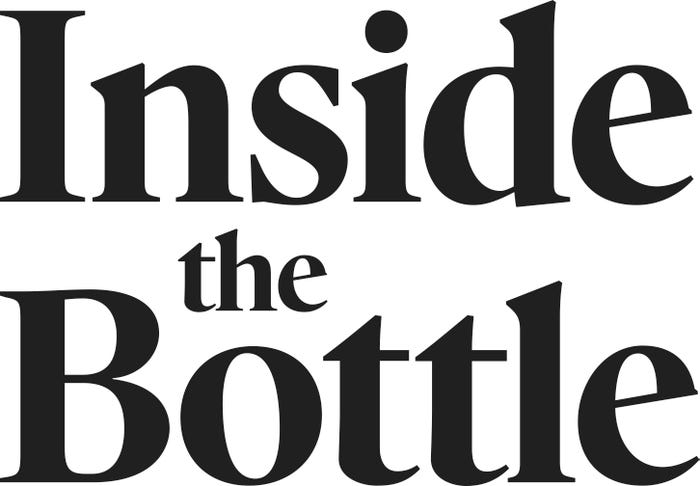
Companies from across the supplement supply chain advocate for a transparent industry and empower consumers to take control of their health. We tell the supplement industry’s story through content, research and education-based events.
Expo West punctuated hot trends and opportunities for supplement innovators – spotlight
April 12, 2024

Sponsored by Inside the Bottle
The dietary supplement market is strong and getting stronger. How much stronger? Billions stronger. Sales are trending about $2 billion higher than Nutrition Business Journal’s (NBJ) pre-Covid forecast, NBJ’s Content and Insights Director Bill Giebler told a packed house at Natural Products Expo West during The State of Supplements address. “We expect an additional $13 billion in sales between now and 2026,” he said.
What trends are shaping those sales? With close to 600 supplement industry exhibitors and over 65,000 attendees, Natural Products Expo West revealed the concepts — and ingredients — propelling the market. Whether you’re a supplier, a brand or a retailer, these product segments should be on your innovation and merchandising radar. Here are several of the hottest supplement categories that rise to the top as spotted by Inside the Bottle and our partners at SPINS.
Underlying themes: Women’s health and sustainability
An “accelerating next wave of women’s health” tops the list in the SPINS 2024 Trends Predictions report. Products formulations will further segment and specialize, with many targeting specific use cases and life stages (especially as Gen X hits menopause). According to the report, “women continue to self-diagnose hormonal issues, which are often misunderstood by primary care providers.” In turn they search the internet, where hormones are a hot topic, the report further notes. Products addressing them will dominate. Many of the top DTC (direct to consumer) brands, like Bloom and Hers, have successfully entered retail. Expect more to follow, pumping up brick and mortar. Female-specific sports nutrition will diversify beyond only “weight loss” and “fat burn.” Women-owned brands will emerge front and center for 2024, as venture capitalists begin to focus on women’s health care.
As it has for the past few years, sustainability remains a powerful underlying theme across categories, one that SPINS forecasts will trend through 2024. Three different overarching sustainability stories impact today’s marketplace: animals (animal and marine animal welfare and wildlife biodiversity), planet (environmental, production practice, agriculture) and people (corporate responsibility, labor practices and diversity, equity and inclusion). And consumers will pay more for products that support them. Fifty-eight percent of progressive shoppers surveyed — 52% of natural channel shoppers and 36% of all U.S. consumers — say they are willing to pay more for products that demonstrate environmental sustainability according to Inside the Bottle consumer research.
While women’s health and sustainability trends touch multiple consumer segments, the following four categories stood out as the ones supplement industry professionals should keep top of mind:
Sustainable omega-3 developments: Algal oils
Consumer demand for omega-3 remains high. The EPA and DHA omega-3 ingredient market size in 2022 was $1.69 billion, an increase of nearly 8% over the previous year according to the Global Organization for EPA and DHA Omega-3s (GOED). Since 2009, global internet search interest in omega-3s has grown more than 50% after a period of flat interest from 2004-2009.
A key change, though, is that more and more people are looking for alternatives to marine sources and sustainable sourcing is high on their radars. While the omega-3 industry faces threats to fish oil supply chains due to factors like El Niño events and increasing aquaculture needs, plant-based and algae-based alternatives offer viable solutions for diversifying omega-3 sources beyond marine sources, reported Sandy Almendarez, VP of content, Informa, from the GOED Exchange 2024. “Growth in the U.S. omega-3 market will come from plant- and algae-based omega-3s,” she said.
This was apparent on the Expo West show floor, with dozens of companies listed as exhibiting algal products. Nature’s single-cell chemical factories can be grown quite sustainably and with supply chain concerns related to varied marine sources, algae sources offer the promise of premium quality and consistent access at a steady price point. Algal-sourced astaxanthin may even enhance the absorption profile. And brands are beginning to adopt the ingredient into new categories like specialty personal care, like French skin care company Microphyt and Columbian based Naturmega.
Superfoods and greens are red hot. In their quest for natural supplement options, more and more consumers are landing on the inherently functional and nutritionally dense ingredient benefits this category delivers. Sales of greens in the mainstream retail channel grew by 145% in 2023 compared with 2022, according to SPINS data. Sales topped $116.6 million for the 52 weeks ending Dec. 31, 2023. In the natural channel, SPINS noted another $41 million in sales. SPINS researchers called out the green foods subcategory as showing “tremendous demand” as trending functional ingredients, with 79% growth over the past 52 weeks.
In addition to the natural benefits, greens and superfoods appeal to consumers’ desire for supply chain transparency and sustainability. Transparency and quality are inextricably linked in the minds of consumers, according to research among thousands of consumers across demographics by New Hope Network proprietary research, NBJ and Inside the Bottle, presented in the report “Supplement consumers today: Attitudes and behavior toward supplements and health.” They’re paying attention to traceable ingredient origins, branded ingredients and scientific research, as well as certifications like NSF certified, GMP certified, USDA Organic and Non-GMO Project Verified.
Mushrooms of all types are the superfood segment sprouting across the show floor with multiple product benefits. Maitake, reishi, turkey tail and agaricus all emerged, but the king of the fruiting body jungle by far was lion’s mane. It’s formulated for supporting brain health as a hip and trendy nootropic for cognitive performance and reducing stress. As the active nutrition market expands, also keep your eye on cordyceps, used for physical endurance.
According to the NBJ 2023 Supplement Business Report, sales of functional mushroom supplements are forecast to grow by $131 million between 2019 and the end of 2025. Mushroom supplements grew by a whopping 60.2% in 2020 and 29.2% in 2021, and NBJ predicts growth in the low tens for the next three years.
Stress, sleep and calm alternatives
Consumers continue to seek holistic solutions for restful sleep and stress. Expo West ingredient stars included certain forms of magnesium, L-theanine, PLT’s Serezin (a blend of Bosellia serrata and Zingiber officinale (ginger)), rhodiola, ashwagandha, Melissa officinalis (lemon balm) and valerian. Indeed, SPINS calls out magnesium, with over $281 million in sales — and 41% sales growth — as a “functional ingredient on the verge of a breakout year.” For parents seeking natural alternatives to melatonin to help kids sleep, options have emerged such as ChildLife Essentials Sleep Essential, featuring ETAS Asparagus officinalis extract, lemon balm, passion flower, valerian root and Suntheanine (L-theanine).
GLP-1 and berberine meet gut health and the microbiome
“Led by Ozempic, the weight-loss drug category is shaping up to be the biggest category of pharmaceuticals of all time,” said NaturalProductsInsider.com Content Director Todd Runestad. GLP-1 drugs are changing the game, and as drugs like Ozempic, Wegovy and Mounjaro redefine weight loss, they’re creating a variety of opportunities for nutrition brands.
Weight-loss drugs may have cast a halo over supplement ingredients. Case in point: the “Nature’s Ozempic” viral effect on berberine, when TikTok moved the ingredient from back-of-shelf to sold-out status. Consumers are looking for small nutritionally concentrated options to meet their needs. Major companies are already marketing products to fill nutrition gaps created by the low-calorie intake of people taking GLP-1 drugs. Of note, Walmart is tracking shoppers who have a prescription for Ozempic. Spoiler alert: These people are buying less food. And, it’s easier to gobble a bar or drink than plan and make a meal. Protein supplements and meal replacement sales in 2023 grew by over 15% versus the previous year, according to SPINS.
But only 32% of patients stuck with Ozempic for full year, according to pharmacy benefits manager Prime Therapeutics. This opens up opportunities for supplement companies seeking to support them as they cycle off the drug, as shared in the 2024 NBJ Sports Nutrition and Weight Management Issue. Truly, it all boils down to healthy metabolism and the ingredients that support it, as the market shifts from “weight management” to “metabolic and full system balance.”
A focus on metabolism with its consequent changes in dietary habits can throw the gut out of balance and drive further demand for digestive and microbiome support. Seventy five percent of adults rank digestive health as high on their list of health priorities and the SPINS trends report says they are seeking digestive health products that branch beyond probiotics, including dietary fiber and prebiotics, in 2024. Keep an eye on total microbiome support, including synbiotics, personalized and condition-specific probiotic strains, postbiotics and gut-friendly foods and food ingredients as areas ripe for growth.
Overall, the state of the U.S. dietary supplement industry clearly remains strong and is leaning into innovation.
Read more about:
ReportsYou May Also Like